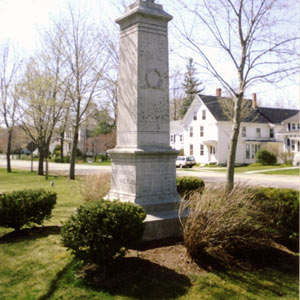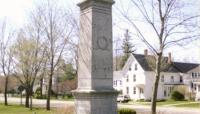British Captain George Waymouth landed in Thomaston in 1605. Known for its pine used as masts for the Royal Navy, the town prospered as a port and shipbuilding center. However, in 1800 it still was home to clearings of tree stumps, rough fields enclosed by log fences, and roads built of logs laid crosswise through bogs. As part of ongoing improvements, residents straightened Old County Road, creating the Mall a roughly half-acre, oblong area between two roads in 1803. William Keith and other citizens improved the Mall twenty-five years later, when it was plowed, leveled, fenced, and lined with densely planted elm trees. This coincided with town-wide improvements: additional streets, the first sidewalks, shade trees, and and ornamental front yards. Influential citizens and sea captains built homes in popular styles – Greek Revival, Gothic Revival, Italianate, and Victorian – many of which bordered the Mall. In 1905 over 2,000 area residents celebrated the 300th anniversary of Captain George Waymouth's arrival with ceremonies and the unveiling of a memorial boulder on the Mall. The granite Civil War monument of a soldier on a pedestal was installed in 1913.
As originally planned, today the Mall’s simple landscape features a lawn, shade trees, and war memorials. Sporadic plantings of maples replaced the formal rows of elms, which succumbed to Dutch elm disease around the 1960s. A monument to veterans of all wars was dedicated in 1985. At approximately 60 feet across at its widest and 600 feet long, the Mall serves as a buffer between historic homes and traffic along U.S. Route 1.





